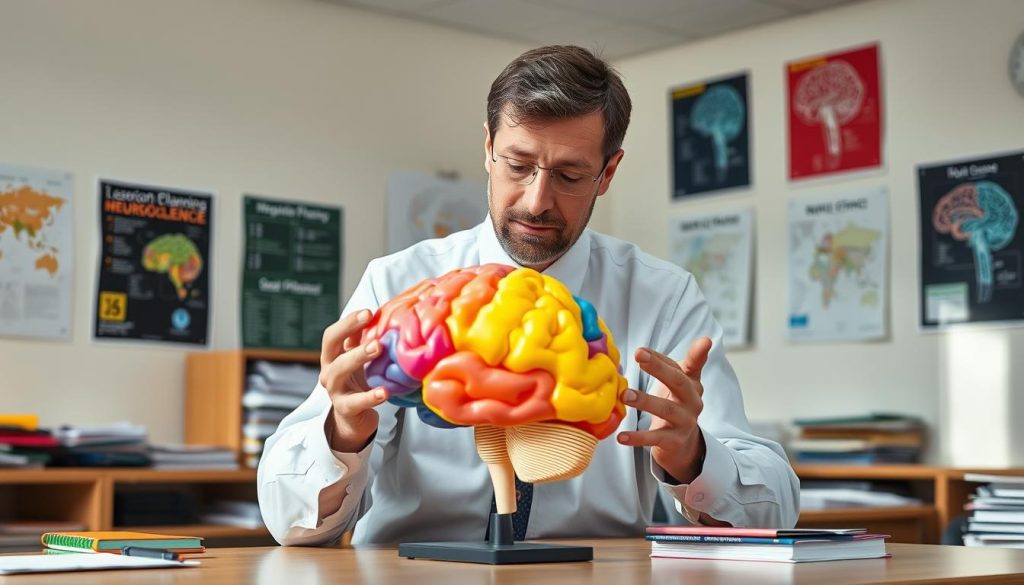Why Brain Research Matters for Every Classroom
The gap between neuroscience and education is narrowing. Today’s brain research offers evidence-based approaches that can dramatically improve how we teach and how students learn. When teachers understand the biological foundations of learning, they can design instruction that works with—rather than against—the brain’s natural processes.
Neuroscientists have discovered that the brain physically changes when learning occurs—a concept known as neuroplasticity. This understanding transforms teaching from a one-size-fits-all approach to a nuanced practice that considers how different brains process information. Developing these specialized teacher skills requires ongoing professional development focused on neuroscience applications.
According to a study published in Frontiers in Psychology, teachers who incorporate brain research into their practice report higher student engagement and better learning outcomes. The science is clear: understanding how the brain learns is no longer optional—it’s essential for effective teaching.
Enhance Your Classroom with Brain-Based Strategies
Discover practical applications of neuroscience research that can transform your teaching approach and improve student outcomes.
Brain Research Reveals: Neuroplasticity Changes Everything
Perhaps the most revolutionary discovery in modern brain research is neuroplasticity—the brain’s ability to reorganize itself by forming new neural connections throughout life. This discovery contradicts the once-held belief that brain development is fixed after childhood. For teachers, this means that every student, regardless of age or background, has the capacity for growth and change.
Neuroplasticity occurs when we learn new information or practice skills repeatedly. The phrase “neurons that fire together, wire together” describes how neural pathways strengthen with use. This biological reality has profound implications for teaching:
- Repetition and practice are biologically necessary for learning
- Spaced practice is more effective than cramming
- Multisensory instruction creates stronger neural networks
- Emotional states significantly impact neural connectivity
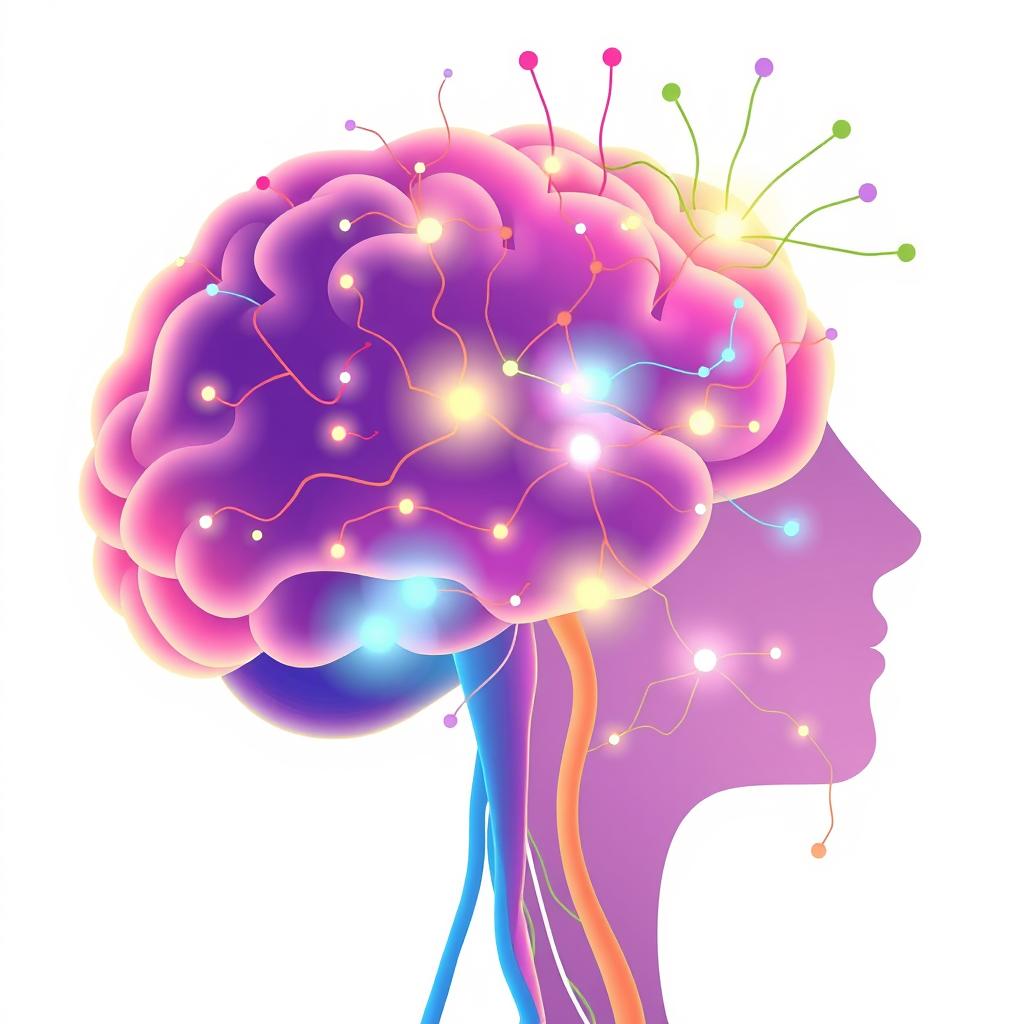
Developing teacher skills that leverage neuroplasticity means creating lessons that provide multiple exposures to content through varied approaches. For example, teaching fractions through visual models, hands-on manipulatives, real-world problems, and digital games creates multiple neural pathways to the same concept.
“The brain changes physiologically as a result of experience. The environment in which a brain operates determines to a large degree the functioning ability of that brain.”
How Brain Research Illuminates Memory Formation
Memory is not a single system but involves multiple brain regions and processes. Understanding how memories form can help teachers design instruction that supports long-term retention rather than temporary recall for tests.
Three Critical Memory Systems
Working Memory
Holds information temporarily while processing it. Limited capacity (5-9 items for adults, fewer for children). Easily overloaded by excessive information.
Semantic Memory
Stores facts, concepts, and vocabulary. Strengthened through meaningful connections to existing knowledge and real-world applications.
Episodic Memory
Records experiences and events. Enhanced by emotion, novelty, and personal relevance. Particularly powerful for learning.
Effective teacher skills include designing lessons that work with these memory systems rather than against them. For instance, chunking information into manageable units respects working memory limitations. Creating emotional connections to content enhances episodic memory formation. Building on prior knowledge strengthens semantic memory networks.
Brain research shows that sleep is crucial for memory consolidation—the process of transferring information from short-term to long-term memory. This biological reality supports homework practices that distribute learning over time rather than assigning massive projects due the next day.
Classroom Application: Begin lessons by activating prior knowledge, present new information in small chunks with visual supports, provide opportunities for students to process and apply information, and revisit key concepts regularly through varied activities.
Brain Research on Attention and Engagement
The brain’s attention system is not designed for the extended focus often required in classrooms. Brain research reveals that attention typically cycles every 10-20 minutes, with shorter spans for younger students. Understanding this biological reality can help teachers design instruction that works with attention cycles rather than fighting against them.

Factors That Enhance Attention
- Novelty: The brain is naturally attracted to what’s new or different
- Relevance: Personal connection to content increases attention
- Movement: Physical activity boosts alertness and cognitive function
- Emotion: Emotional content receives preferential processing
- Challenge: Appropriately difficult tasks maintain engagement
Developing teacher skills that incorporate these attention-enhancing elements doesn’t require elaborate planning. Simple strategies like beginning lessons with surprising facts, incorporating brief movement breaks, connecting content to student interests, and varying instructional approaches can significantly boost attention and engagement.
The reticular activating system (RAS) acts as the brain’s attention gateway, filtering the millions of sensory inputs we receive each moment. Teachers who understand how to activate the RAS through novelty, contrast, and emotional relevance can capture student attention more effectively.
Master Attention-Grabbing Teaching Techniques
Learn how to apply brain research to create engaging lessons that capture and maintain student attention.
The Emotional Brain: Why Feelings Matter in Learning
Brain research has definitively shown that emotion and cognition are not separate systems but are intricately connected. The amygdala, part of the brain’s limbic system, acts as an emotional filter for incoming information, tagging experiences as positive, negative, or neutral. This emotional tagging significantly impacts what information receives attention and gets stored in long-term memory.
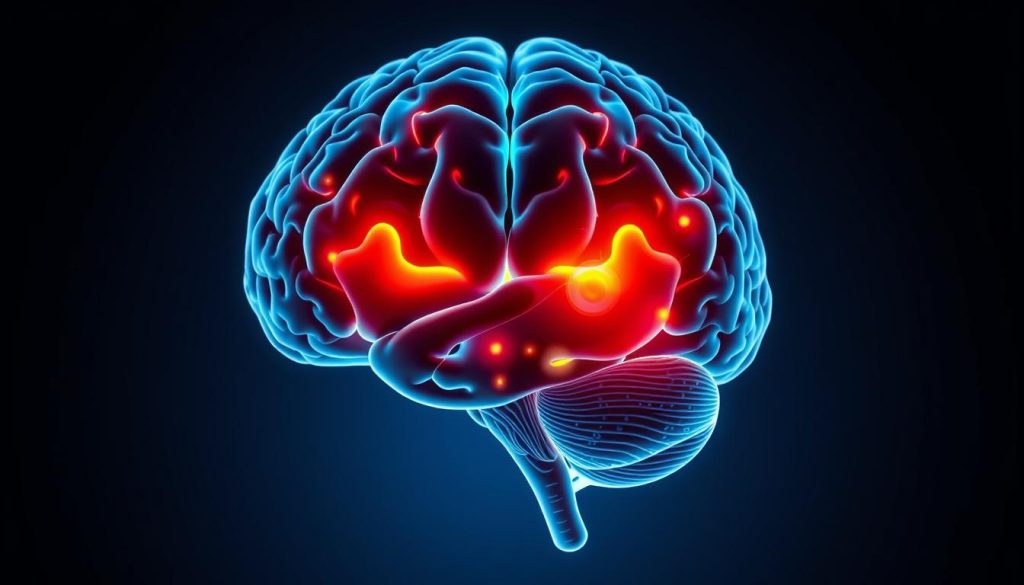
When students experience negative emotions like fear, anxiety, or embarrassment, the amygdala can trigger a stress response that impairs higher-order thinking. This “amygdala hijack” redirects blood flow away from the prefrontal cortex (responsible for reasoning and problem-solving) to prepare for fight-or-flight. In contrast, positive emotional states enhance learning by releasing neurochemicals that support attention, memory formation, and cognitive flexibility.
Developing teacher skills that address the emotional dimension of learning is essential. Creating psychologically safe classrooms where students feel valued, respected, and supported isn’t just about being nice—it’s about creating the biological conditions necessary for optimal learning.
“Emotion is the system that tells us how important something is. Attention focuses us on the important and away from the unimportant things. Emotional events receive preferential processing in the brain.”
Strategies for Emotional Engagement
- Begin lessons with curiosity-provoking questions
- Share personal stories that connect to content
- Use humor appropriately to create positive associations
- Incorporate music to establish emotional tone
- Celebrate small successes to build confidence
- Provide choice to increase sense of autonomy
- Use cooperative learning to foster belonging
- Teach emotional regulation strategies explicitly
- Model enthusiasm for the subject matter
- Create rituals that build community
Brain Research Supports Strategic Breaks
The brain needs downtime to process and consolidate information. Contrary to the notion that more time on task equals more learning, brain research shows that strategic breaks actually enhance learning by preventing cognitive overload and allowing for memory consolidation.
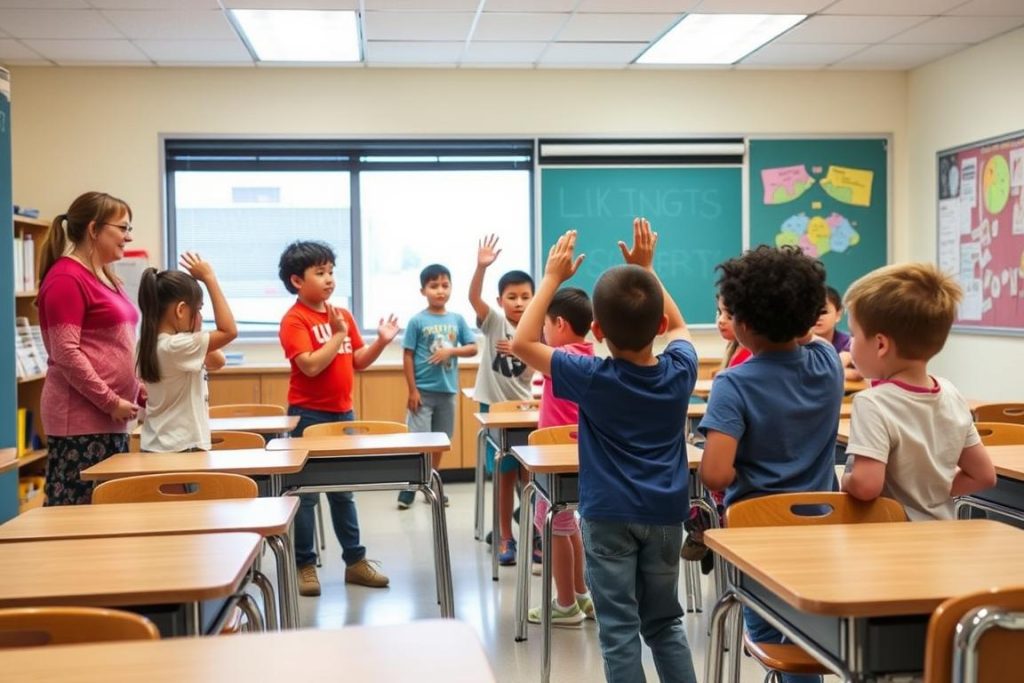
The prefrontal cortex, responsible for executive functions like focusing attention and making decisions, fatigues relatively quickly. When this happens, learning efficiency decreases dramatically. Brief, purposeful breaks can reset attention and actually increase the total amount of content students can process in a given period.
Effective Brain Breaks
Movement Breaks
Simple physical activities like stretching, jumping jacks, or dance moves increase blood flow to the brain, delivering oxygen and glucose needed for optimal function.
Breathing Exercises
Guided breathing activates the parasympathetic nervous system, reducing stress hormones that interfere with learning and promoting a calm, focused state.
Cross-Lateral Activities
Movements that cross the body’s midline (like touching right elbow to left knee) activate multiple brain regions and strengthen neural connections between hemispheres.
Incorporating strategic breaks requires developing teacher skills in timing and transition management. The ideal time for a break is just before attention begins to wane—typically after 10-20 minutes of focused work for older students and 5-10 minutes for younger ones. Quick, efficient transitions into and out of break activities maximize their benefit.
Classroom Application: Plan 1-2 minute brain breaks every 20 minutes during instruction. Use a timer to maintain consistency. Establish clear routines for breaks so they don’t become disruptive.
Brain Research Reveals Why Differentiation Works
Each brain is uniquely wired based on genetics, experiences, and individual development. Brain research confirms what teachers have long observed: students learn differently. Understanding the neuroscience behind these differences can help teachers implement differentiation strategies more effectively.
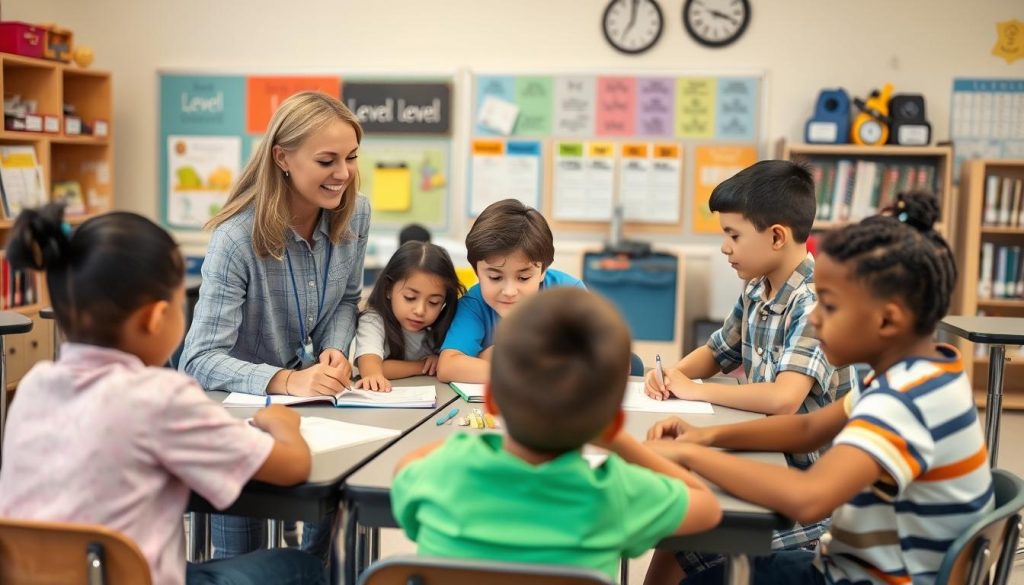
Brain imaging studies show that when learning new information, different individuals activate different neural networks. Some students process information more efficiently through visual pathways, others through auditory channels, and still others through kinesthetic experiences. These preferences aren’t just learning styles—they reflect actual differences in neural processing.
Developing teacher skills in differentiation means creating multiple pathways to learning goals rather than multiple goals. The objective isn’t to teach less to some students, but to provide varied approaches to the same content based on readiness, interest, and learning profile.
Neuroscience-Based Differentiation Strategies
Content Differentiation
Provide resources at multiple complexity levels. Use graphic organizers to scaffold understanding. Pre-teach vocabulary to support working memory.
Process Differentiation
Vary time allocations based on processing speed. Offer choice in how information is processed. Use flexible grouping to support different learning needs.
Product Differentiation
Allow multiple ways to demonstrate understanding. Provide clear rubrics focused on essential concepts. Offer scaffolded options for different readiness levels.
Brain research also highlights the importance of challenge in learning. When tasks are too easy, the brain doesn’t engage deeply. When they’re too difficult, stress responses interfere with learning. The sweet spot—what psychologist Lev Vygotsky called the “zone of proximal development”—activates the brain’s reward systems and promotes optimal learning.
Master Differentiation Through Brain Research
Learn practical strategies for differentiating instruction based on neuroscience principles.
Brain Research on Retrieval Practice
One of the most robust findings from cognitive neuroscience is the power of retrieval practice—actively recalling information rather than simply reviewing it. When students retrieve information from memory, they strengthen neural pathways and make the information more accessible for future use.
Traditional study methods like re-reading notes or highlighting text feel productive but actually create what neuroscientists call an “illusion of knowing.” In contrast, retrieval practice creates desirable difficulty that enhances long-term retention. The struggle to recall information is precisely what strengthens memory.
Functional MRI studies show that during retrieval practice, multiple brain regions activate simultaneously, creating stronger, more elaborate neural networks than passive review. These strengthened networks make information more accessible when needed for application or problem-solving.
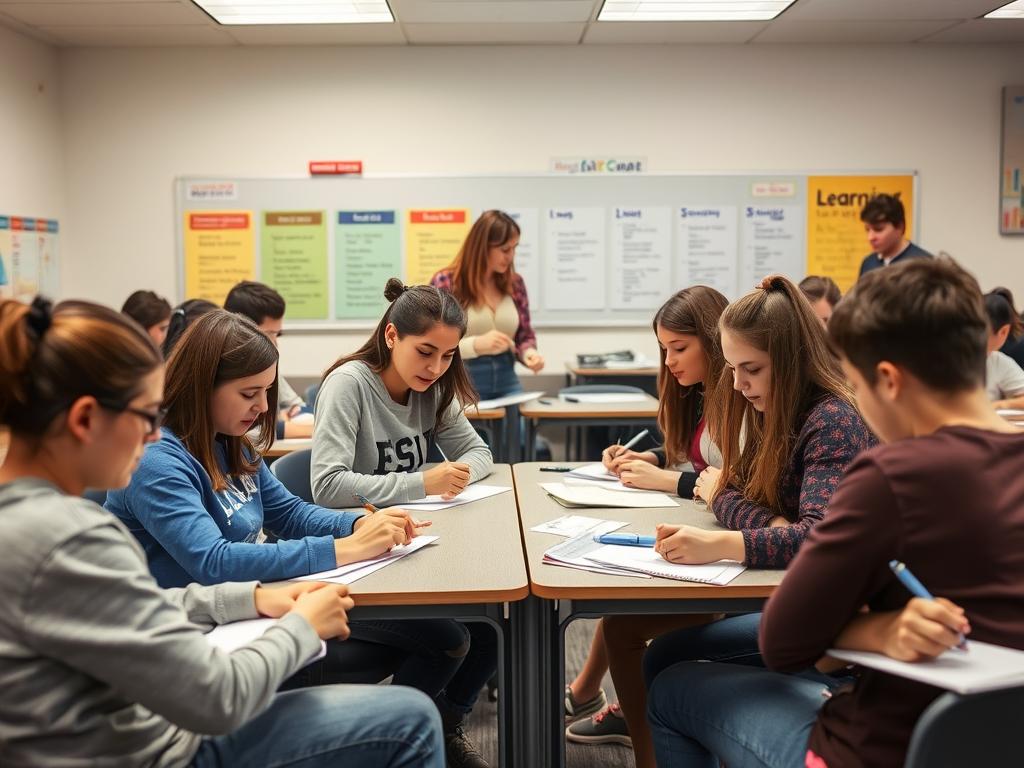
Effective Retrieval Practice Strategies
Low-Stakes Quizzing
Brief, frequent quizzes with minimal grade impact. Can be self-administered, peer-administered, or teacher-led. Most effective when feedback is immediate.
Brain Dumps
Students write everything they remember about a topic in a short time period. Can be structured (with prompts) or unstructured. Effective for activating prior knowledge.
Concept Mapping from Memory
Students create visual representations of relationships between concepts without referring to notes. Promotes both retrieval and connection-making.
Developing teacher skills in implementing retrieval practice means moving beyond traditional “study more” advice to students. Effective teachers explicitly teach retrieval strategies, build them into regular classroom routines, and help students understand the science behind why they work.
“Every time you retrieve a memory, you change it slightly, and you make it stronger and more retrievable the next time. That’s why retrieval practice is such a powerful learning strategy.”
Brain Research Confirms: Sleep Is Critical for Learning
Sleep isn’t just rest for the brain—it’s an active time when learning is consolidated and neural connections are strengthened. Brain research has revealed that during sleep, the brain replays the day’s experiences, transferring information from temporary storage in the hippocampus to more permanent storage in the cortex.
This process, called memory consolidation, is particularly active during slow-wave sleep (deep sleep) and REM sleep. Studies show that learning performance can improve by up to 20-40% after a good night’s sleep, even without additional study. Conversely, sleep deprivation severely impairs attention, working memory, and the ability to form new memories.
For teachers, this research has important implications. Homework assigned late in the evening may be less effective than the same work completed earlier. Major tests scheduled after school events that disrupt sleep patterns may not accurately measure what students have learned. And teaching students about the connection between sleep and learning may be as important as teaching study strategies.
Classroom Application: Discuss the importance of sleep for learning with students. Consider sleep cycles when scheduling major assessments. Teach relaxation techniques that can improve sleep quality.
Developing teacher skills that incorporate sleep science means rethinking traditional practices like late-night study sessions or excessive homework. It also means advocating for school schedules that align with adolescent sleep patterns, which naturally shift to later bedtimes and wake times during puberty.
According to a report from the National Sleep Foundation, most school-aged children need 9-11 hours of sleep, while adolescents need 8-10 hours. Yet many students get far less, creating a sleep debt that compounds over time and interferes with learning.
Practical Applications of Brain Research in Your Classroom
Translating brain research into classroom practice doesn’t require expensive equipment or complete redesign of your teaching approach. Small, strategic changes based on neuroscience principles can significantly enhance learning. Here are practical applications you can implement immediately:
Start With Activation
Begin lessons by activating prior knowledge and creating curiosity. Ask provocative questions, present contradictions, or share surprising facts to engage the brain’s attention systems.
Chunk Information
Present information in small, manageable segments (3-5 items for younger students, 5-9 for older ones). Provide processing time between chunks through discussion, application, or reflection.
Incorporate Movement
Integrate purposeful movement into lessons. Have students move to indicate agreement/disagreement, act out concepts, or use hand signals to show understanding.
Use Visual Processing
Pair verbal information with visual supports. Create anchor charts, use graphic organizers, and teach students to create visual representations of concepts.
Build in Reflection
End lessons with reflective questions that prompt students to retrieve key concepts and connect them to prior knowledge. This strengthens neural pathways and enhances retention.
Teach Learning Strategies
Explicitly teach students how their brains learn and effective strategies based on neuroscience. This metacognitive awareness empowers students to become more effective learners.
Developing these teacher skills requires intentional practice and reflection. Start by selecting one or two strategies that align with your current teaching context and gradually expand your repertoire as you become more comfortable with brain-based approaches.
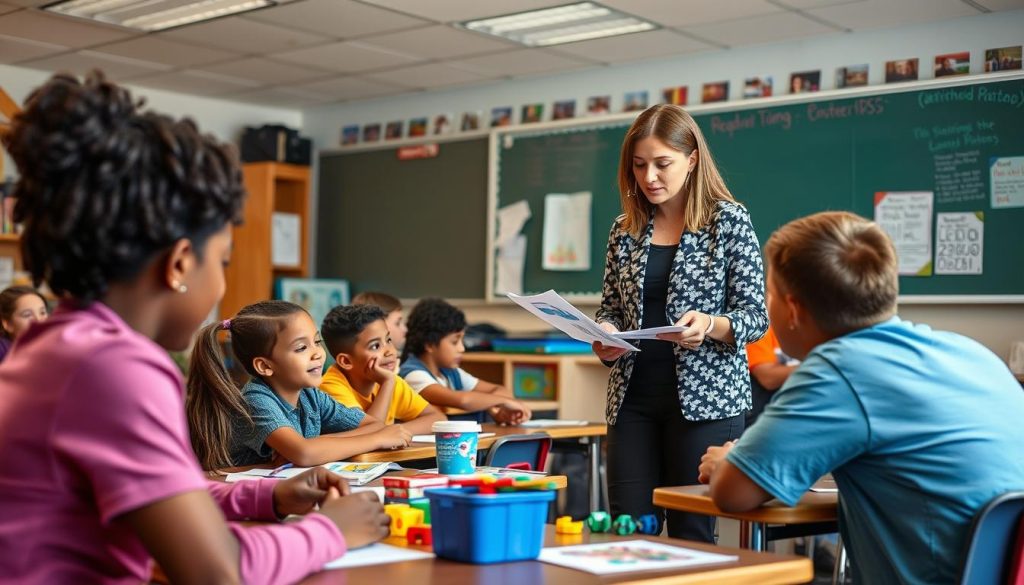
Transform Your Teaching with Brain Research
Access comprehensive resources and professional development opportunities to enhance your teacher skills through neuroscience applications.
Embracing Brain Research: The Future of Education
The integration of brain research into educational practice represents a significant shift in how we approach teaching and learning. By understanding the biological mechanisms that underlie attention, memory, emotion, and learning, teachers can design instruction that works with—rather than against—how the brain naturally functions.
Developing teacher skills based on neuroscience isn’t just about improving test scores—it’s about creating learning experiences that promote long-term retention, transfer of knowledge to new situations, and a love of learning that extends beyond the classroom. When students understand how their brains work and experience success through brain-friendly teaching approaches, they develop agency and confidence as learners.
The field of educational neuroscience continues to evolve, offering new insights that can inform classroom practice. As professionals committed to student success, we have a responsibility to stay informed about these developments and thoughtfully incorporate them into our teaching. The bridge between brain research and classroom practice is one that each of us can help build, one evidence-based strategy at a time.
“The more that you understand about how the brain works, the more tools you have to help students learn.”
Ready to Transform Your Teaching?
Take the next step in your professional development journey by exploring our comprehensive course on applying brain research in the classroom.

